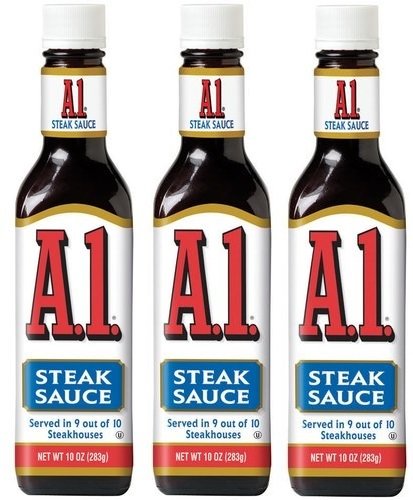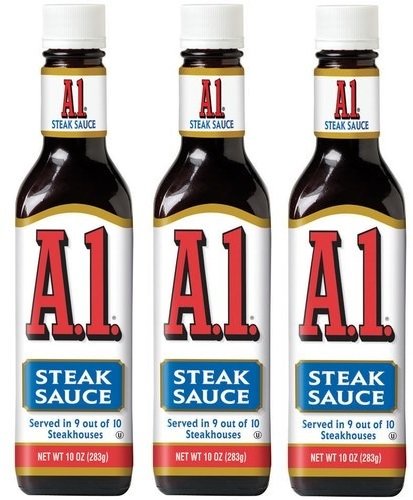The science of how processed foods and consumer products are made is absolutely fascinating…and a little stomach-turning, too.
Raisin the Steaks
A number of tangy, Worcestershire sauce-like steak sauces, such as A1, contain raisin paste. That’s just dried grapes—raisins—mushed into a paste and mixed up with the other herbs, spices, and flavorings. It’s traditionally been included in steak sauces since the 1820s. That’s when royal chef H.W. Brand created the first such sauce for King George IV of the U.K. Not only did the antioxidants in raisins naturally helped slow the decay of beef in the days before refrigeration, but the strong flavor masked the taste of decaying beef.
A Bad Cup of Coffee
Putrescine is a chemical produced when the bacteria called E. coli (harmful or fatal in large amounts) present in meat begins to break down amino acids. It’s what makes meat spoil and taste spoiled. (Unless you cover that meat in steak sauce, of course.) Putrescine is also naturally present, in very trace amounts, in coffee beans.
“Flavor Country” is Beaver Country
Hundreds of chemicals go into the creation of mass-produced cigarettes. Many of them are lab-created, but one of the more natural ones is castoreum. It’s extracted from a gland right next to a beaver’s anus, and it imparts to cigarettes a sweet and “smoky” flavor. Castoreum is a powerful flavoring agent that’s also used in mass-produced ice cream to enhance the taste of vanilla. In cigarette production, it’s so strong that one pound of the stuff will flavor approximately 50 billion cigarettes.
Imitation is the Sincerest Form of Dairy
A lot of inexpensive frozen pizza and frozen pizza-like things, such as Hot Pockets, are inexpensive in part because manufacturers eschew real cheese in favor of much cheaper (and longer-lasting) “imitation cheese.” So what’s that made of? Well, cheese…at least a little. Imitation mozzarella starts with a very small base of real mozzarella. The rest of the ingredients bulk up the fake cheese, and also suggest the texture and flavor of real cheese, including milk, corn starch, lactic acid, and a gum made from red seaweed.
That Tingly Feeling
Ever wonder why your tongue and mouth feel slightly numb after using a really strong mouthwash, such as Listerine? It’s not because of the high alcohol content, although these mouthwashes do have a high alcohol content. It’s due to a chemical ingredient called P407, short for polyaxmer 407. It’s an industrial petroleum product, technically a detergent, that helps keep the mouthwash ingredients properly mixed. It stays liquid at room temperature, such as in mouthwash, but turns into a gel when it heats up to body temperature…which happens the second the mouthwash hits your tongue.









